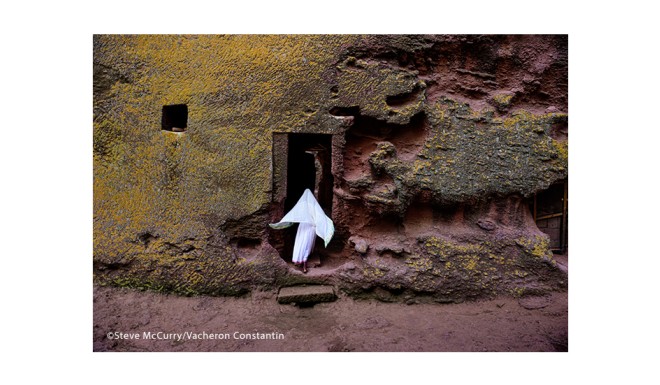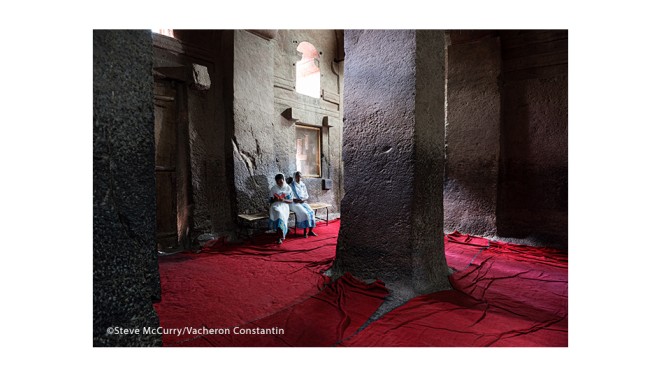
Glorious past: Ethiopia abounds in sacred sites and places of stunning natural beauty
Mountains, rivers, forests, waterfalls and famous historical sites provide visitors with a dramatic backdrop when travelling around this country

In some ways Ethiopia can be said to be one of the cradles of civilisation, as some of the earliest fossils of modern humans – for example, the hominid, “Lucy” – have been found there. Situated in the Horn of Africa, this former kingdom is blessed with a stunning natural beauty: mountains, rivers, forests and waterfalls abound. These geographical features dovetail perfectly with numerous historical sacred sites that include Aksum, Harar and Lalibela.
The latter, which is a small rural town in the mountainous Amhara Region, north Ethiopia, is famous for having some of the finest rock-cut architecture on the planet. The edifices in question, comprising 11 subterranean churches that are often linked to each other by tunnels, were said to have been built in the 12th century under the auspices of King Gebre Lalibela, who wanted to create a New Jerusalem – the old one having been seized by Muslims in 1187.

And carved out of the volcanic bedrock by the indigenous population – aided by angels, according to folklore – there’s definitely a mesmerising, ethereal quality to these totemic pink-hued structures. It’s no surprise, then, that this Unesco World Heritage Site has witnessed many pilgrimages. Indeed, in 1936, a year after Italy invaded Ethiopia (the occupation lasted for five years), the nation’s emperor, Haile Selassie, visited for fasting and prayer. Today, thousands of people stop by for similar reasons, splitting their time between the three spread out clusters – the eastern, northern and western groups – of these monolithic temples.
All still in use, one of the most famous is Bet Medhane Alem, partly due to it being considered to be the largest rock-hewn church in existence – it’s 33.5m by 23.5m, and 11.5m high – and also as it houses the ancient 7kg gold Lalibela Cross. Nonetheless, perhaps even more celebrated, as it is the best preserved, is Bet Giyorgis (Church of St. George), which is a 15-metre-high three-tiered plinth in the shape of a Greek cross. Outside, expect to glimpse a baptismal pool and, creepily, a few mummified corpses – in the cavities of the walls that surround the building. Inside, there are exquisite reliefs, carvings and other old-age treasures.

Also Unesco World Heritage-listed, another place that has a timeless spiritual quality is Aksum. It’s a city located in northern Ethiopia that’s regarded as one of the leading ancient sites in sub-Saharan Africa because of a fascinating array of monuments, religious edifices and palace ruins. A good spot to begin an exploration can be in the 350-year-old, sandy and dark grey-coloured Church of St. Mary of Zion (men only). Destroyed and re-fabricated on at least two occasions, nowadays, there are two other buildings within the grounds: a 1950s-cathedral constructed by Haile Selassie so that women could pray, and the bijou Chapel of the Tablet. It wouldn’t be astonishing to notice Indiana Jones skulking around this latter edifice, as legend decrees that the Ark of the Covenant is inside – unfortunately, nobody is permitted to see it. While still in town, dating from the 7th century AD, the Palace of the Queen of Sheba, despite being more or less just foundations, is worth a look-over, as is the Northern Stelae Field. It’s covered with 120-plus of the eponymous, 1,700-year-old, solid granite slabs. No one knows exactly why they were erected here. The biggest, though now in fragments, would be 33m tall and weigh 520 tonnes. However, they are believed to be associated with the plethora of tombs, many not totally excavated and several others thought not to be discovered, that are also in this area.
A seven-hour drive away, a unique experience can be found in Harar, where under supervision in the late-evening, it’s possible to feed the spotted hyenas. It’s an entirely safe activity and, like your trip to this amazing country, will leave you feeling curious, spellbound and invigorated.